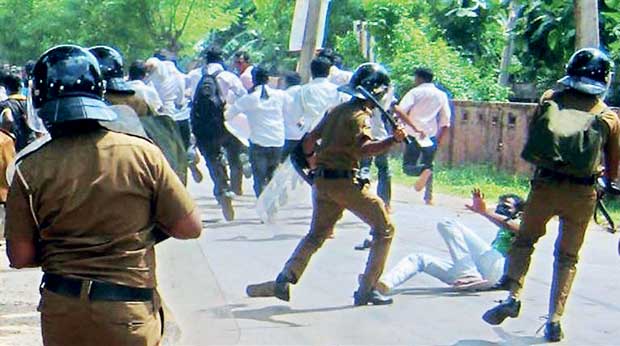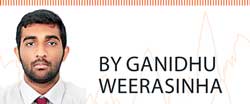20 Dec 2016 - {{hitsCtrl.values.hits}}

 Social movements have shaped and are shaping modern societies around the globe.
Social movements have shaped and are shaping modern societies around the globe.
From the American civil rights movement to the anti-apartheid struggle in South Africa, social movements have benefited and transformed the economic, political and social conditions of many people.
But this is not always the case.This article will discuss in brief the political and historical background of social movements and the factors leading to civil unrest using data collected by the Interntional Labour Organisation (ILO) to further explore this issue.
The risk of civilian unrest is on the rise in many parts of the world. According to polling data collected by ILO’s World of Work Report, it is estimated that ‘the risk of unrest has risen the most in advanced economies over the past five years, followed by the Middle East, North Africa and South Asia’.
The people on the streets in protest from Washington to Seoul demonstrate the reality of ILO’s research findings on advanced economies.
The ability to express our discontent towards government policy is a fundamental attribute of a democracy. However, it is clear that protests and strikes that continue for a long period will obstruct the efficiency of government mechanisms and subsequently affect the economy negatively.
Prior to moving to the issues closer to home, one may first recognizethe factors that contribute to an increasing risk of civil unrest. The ILO puts forwardthe following six factors:
The first, income inequality and perception of injustice: perception of economic and social disparities, and increasing social exclusionis said to have a negative impact on social cohesion and tends to lead to social unrest (Easterly and Levine, 1997). In early 2016, junior doctors in the United Kingdom staged a series of strikes to renegotiate their contracts. Unsatisfied with the outcome, they took to the streets once more in October resulting in the cancellation of 100,000 operations and over 1 million appointments. On the 2nd of December 2016, many private bus unions in Sri Lanka resorted to conduct a strike opposing the recent budget proposal to increase the traffic fines leading to a major inconvenience in public transport island wide.
The second, Fiscal consolidation and budget cuts: ‘Austerity measures’ have led to politically-motivated protests and social instability. This has been the case in Europe for many years, from the end of the Weimar Republic in the 1930s to today’s anti-government demonstrations in Greece (Ponticelli and Voth, 2011).
However, this has also been a feature in developing countries. In September 2016, tens of millions of public sector workers have gone on a day-long strike across India, protesting against Prime Minister Narendra Modi’s economic policies, particularly his plans to push for greater privatisation. This led to the temporary closing of thousands of state-run banks, government offices, factories and greatly disrupted public transport.
The third factor, Higher food prices: In addition to collective frustrations regarding the democratic process, rising food prices were also central to the developments associated with the Arab Spring (Bellemare, 2011). More than 5,000 people staged protests across Jordan in «a day of rage” to protest against escalating food prices and unemployment.
Fourth the Heavy-handedness of the State: In countries where the State has resorted to excessive use of force (police and military) to tackle social upheavals instead of focusing on the actual causes of unrest, such actions have often exacerbated the situation (Justino, 2007).In February 2016, government crackdown on illegal street food vendors turned violent in Hong Kong, as riot police clashed with protesters in the shopping district of MongKok following government officials attempt to evict street vendors selling from unlicensed stalls.
The Fifth factor is the Presence of educated but dissatisfied populace: Countries with large populations of young, educated people with limited employment prospects tend to experience unrest in the form protests (Jenkins, 1983; Jenkins and Wallace, 1996). This has been the case recently in many parts of the world, from southern European countries, such Greece and Spain to South Asian countries. For instance, in late August 2016 the Inter University Students’ Federation in Sri Lanka staged a large scale protest march against a private medical university. Their attempt to enter a high security zone was halted by police intervention.
Finally, Prevalence of mass media: Past studies have highlighted the impact of radio on the organization of demonstrations, and clearly the use of the Internet (e.g. through the use of Facebook and Twitter) have played a role in recent incidents of unrest. In September 2011, 3,000 people assembled at Battery Park with the intention of occupying Wall Street to protest greed and corruption in the government and financial system. They didn’t succeed geographically, but with the use of social media the movement was able to gain momentum and spread to cities across the US and around the world.
The right to freedom of expression and the right to peaceful protest are crucial in a functioning democracy. The proliferation of information and ideas help inform political debate and are essential to public accountability and transparency in government. It is important to note that there are cases where public demonstrations are clearly justified.
However, the efficient functioning of government institutions and mechanisms is paramount. Strikes, protest and other public demonstrations should be the last option for citizens to express their discontent. It is imperative to establish forums for discussion and dialogue for citizens to voice their concerns and for elected representatives to consult the public.
We can reflect on the words of the late US President Theodore Roosevelt, ‘Free speech, exercised both individually and through a free press, is a necessity in any country where people are themselves free’.
(The writer is a Research Assistant (intern) at the Institute of National Security Studies Sri Lanka (INSSSL) and anInternational Relations undergraduate from the University of London International Programme, Sri Lanka. This article does not reflect the stance of the INSSSL or the Government of Sri Lanka)
10 Jan 2025 23 minute ago
10 Jan 2025 40 minute ago
10 Jan 2025 1 hours ago
10 Jan 2025 2 hours ago
10 Jan 2025 3 hours ago